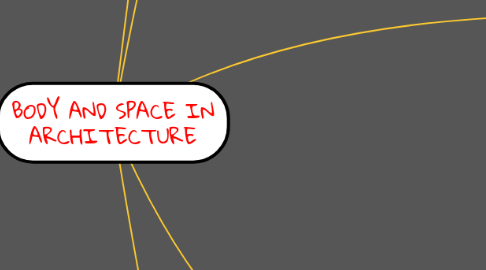
1. Vision and Haptic Realm
1.1. Senses
1.1.1. Touch
1.1.1.1. Information of object texture
1.1.1.1.1. temperature
1.1.1.1.2. weight
1.1.1.1.3. density
1.1.2. sight/vision
1.1.2.1. upon touch
1.1.2.2. primary of documentation
1.1.2.2.1. tool for
1.1.2.3. knowledge
1.1.2.3.1. should be based on evidences
1.1.2.4. intellectual
1.1.2.4.1. Pallasma
2. Spatial and Temporality
2.1. Space
2.2. Being
2.2.1. Spatial of being
2.2.1.1. Neufert
2.2.1.2. Human body proportions
2.3. Space Body Perception
2.4. Space time perception
3. Body, Space and Time
3.1. Space
3.1.1. A property of the mind
3.1.1.1. physical matter
3.1.2. to design is to imagine
3.1.2.1. new
3.1.3. Aestheticisisation
4. Permanence and Temporariness
4.1. Temporary
4.1.1. lasting only for alimited time not permanent
4.1.2. Can disappear somehow
4.1.3. Modernism
4.1.4. Newness
4.1.5. Innovation
4.1.6. Change
4.1.7. Social Transformation
4.1.8. Technological advancement
4.1.9. History
4.2. Archigram
4.2.1. a team based the design strategy of temporariness
4.2.2. questioned permanence
4.2.3. futuristic
4.2.4. high-scale
4.2.5. temporal achitecture as a new way of
4.2.5.1. Dwelling
4.2.5.1.1. Micro dwelling
5. Poetics of Space
5.1. Gaston Bachelard
5.1.1. phenomenology of poetic imagination
5.1.2. how our perception
5.1.2.1. mainly from our imagination
5.1.2.2. something more than reality
5.1.3. Perception
5.1.3.1. subjective
5.1.3.2. we perceive the world according to ourselves
5.1.3.3. in one sense
5.1.3.3.1. relative
5.1.4. Daydreaming
5.1.4.1. start at the moment we move form physical experience towards an imaginary one
5.1.4.1.1. imaginative
5.1.4.1.2. creativity
5.1.4.1.3. psychological space
5.1.4.2. Creative people
5.1.4.2.1. who use imagination
5.1.4.3. Artistic people
5.1.4.3.1. poet
5.1.4.3.2. literature
5.1.4.4. Memory & Imagination
5.1.4.4.1. places where we go are not familiar, we perceive as intangible
5.1.4.4.2. having different spatial perception
5.1.4.4.3. Poetry
5.1.4.4.4. Spatial
5.2. Dwelling
5.2.1. Inhabited space
5.2.2. protects the dreamers and allows one to dream in peace
5.2.2.1. at home we feel safer
5.2.2.2. intimate
5.2.2.3. place to daydreaming
